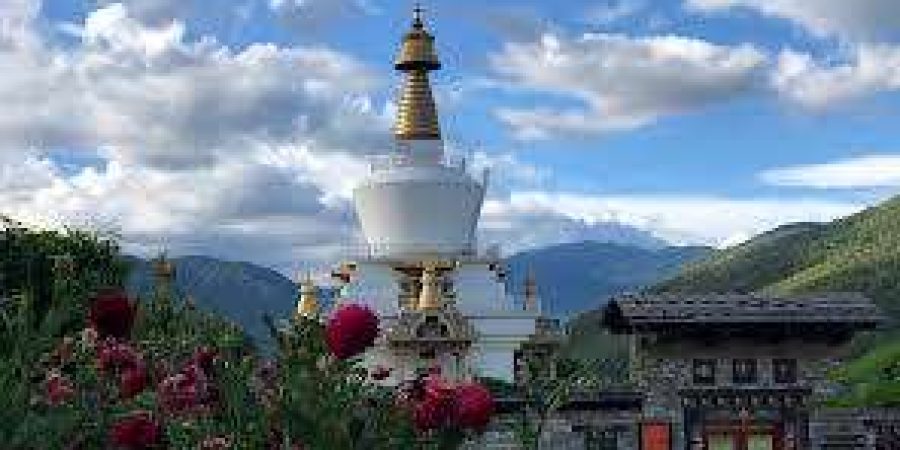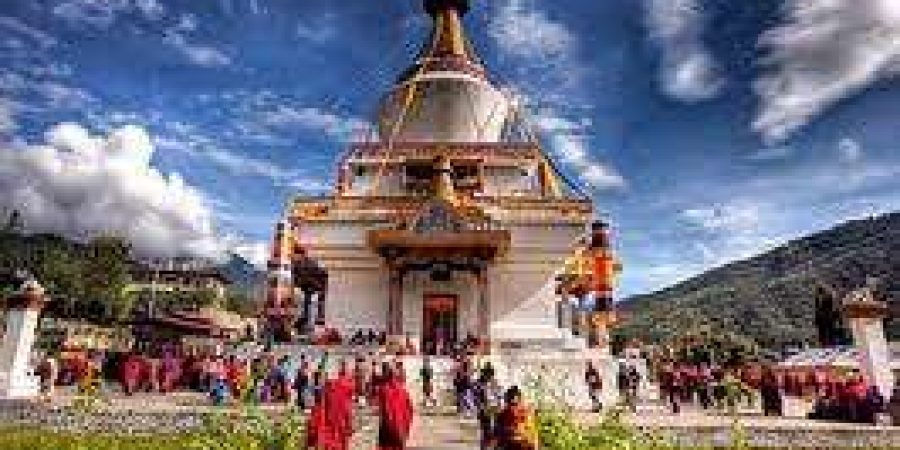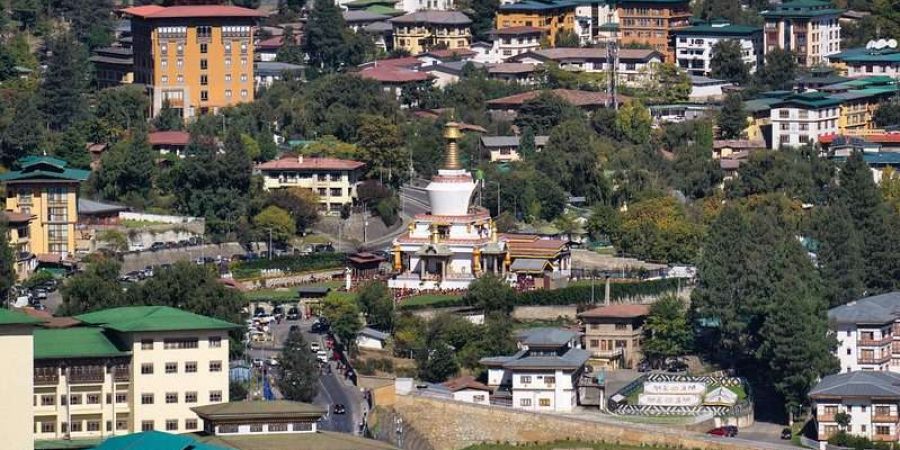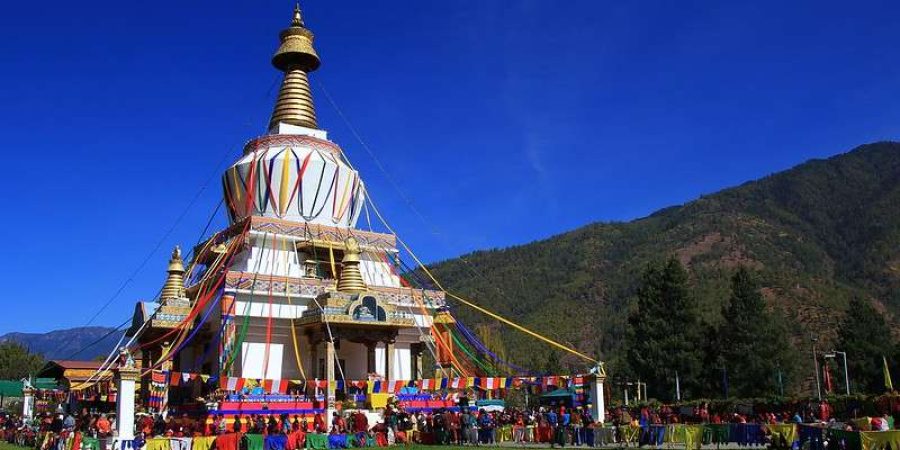The National Memorial Chorten in Thimphu is one of Bhutan’s most significant religious landmarks, offering both locals and visitors a serene space for prayer and reflection. Built in 1974, this white-washed stupa was erected in memory of Bhutan’s third king, Jigme Dorji Wangchuck, who is often referred to as the “Father of Modern Bhutan” for his efforts in bringing the country into the modern age. Unlike many other chortens, which often contain relics, the National Memorial Chorten is more of a focus for daily worship and rituals, with no entry required to view its interior. The chorten’s design follows the traditional Tibetan style, complete with a golden spire, a crescent moon, and a sun, symbolizing the king’s vision of global peace.
Located in the heart of Thimphu, the National Memorial Chorten has become a popular gathering spot for both young and old Bhutanese alike. From early morning until late evening, you can find locals circling the chorten, spinning prayer wheels, and murmuring prayers. This ritual of walking clockwise around the stupa, known as kora, is an essential practice in Bhutanese Buddhism, believed to earn merit and bring good karma. The chorten’s courtyard is adorned with intricate paintings and sculptures representing Buddhist deities, and the atmosphere is often filled with the soft hum of prayer chants and the gentle clinking of prayer beads.
The National Memorial Chorten also plays a vital role in the spiritual life of Thimphu, serving as a venue for religious ceremonies and community gatherings. On special occasions, monks and laypeople gather here to perform rituals and offer prayers, particularly during Buddhist festivals. The chorten is not only a place of worship but also a symbol of the king’s enduring legacy and the Bhutanese people’s deep respect for their spiritual and cultural traditions. Its central location in Thimphu makes it easily accessible, and it remains a must-visit site for anyone looking to experience the spiritual heart of Bhutan.




